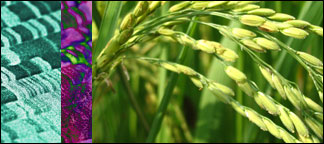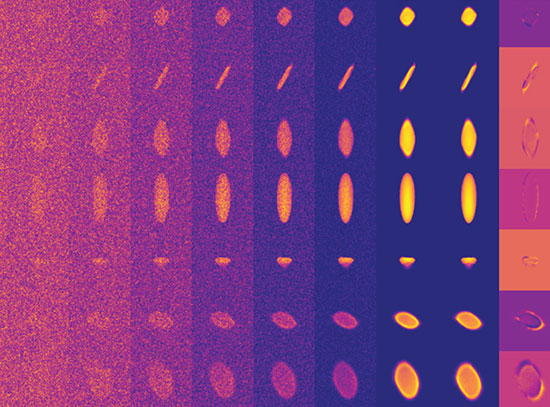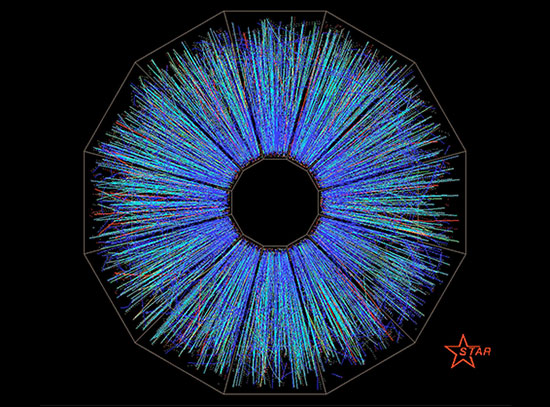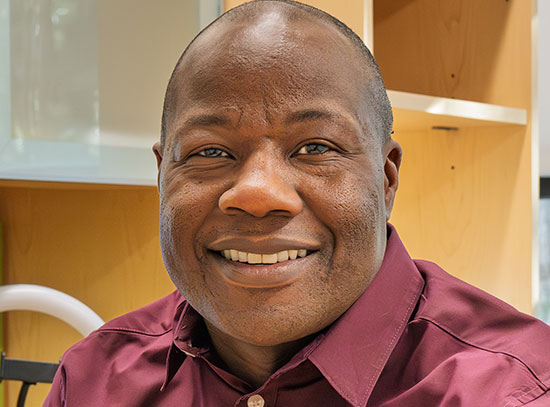International Team Presents Finished Sequence of Rice Genome
Map-based sequence could help increase production of world's number-one food crop
August 10, 2005
UPTON, NY - An international* collaboration of scientists has generated and analyzed a "finished quality" genetic sequence of rice, covering 95 percent the sequenced strain's genome. Described in the August 11, 2005 issue of Nature, this most-complete rice genome sequence ever attained is anchored to previously identified and mapped genetic markers, making it extremely useful for identifying genes important to increasing agricultural productivity.

"With this map-based sequence, you can use known genetic markers to locate the actual genes that underlie traits such as insect resistance, drought resistance, or higher seed yield, and more efficiently combine rice strains with these beneficial genetic traits to make new, more productive varieties," said Brookhaven biologist Benjamin Burr, who has served as project coordinator for the International Rice Genome Sequencing Project (IRGSP) since its inception in 1998.
Knowledge of the rice genome will also aid in increasing the productivity of other cereal crops such as wheat, sorghum, and corn, since there is a high degree of similarity in the way genes are arrayed on the chromosomes of all cereal grasses, Burr said.
Rice is the world's most important food source, feeding more than half the global population. But with increases in population and economic development, not to mention environmental degradation and decreases in suitable arable land, current strains of rice may soon be unable to meet the world's demand.
A combination of biotechnology and improved conventional breeding could help increase crop yield and stability, but both depend on a high-quality rice genome sequence. Recognizing this, Burr - a consultant for The Rockefeller Foundation's Rice Biotechnology Initiative since 1989 - and colleague Michael Gale, now retired, organized a workshop in Singapore in 1997 for all scientists interested in sequencing the rice genome. "We were overwhelmed by the cooperation we found," recalled Burr. "We got everybody to agree to work on a single strain of rice and to share the information they obtained."
In 1998, that initial collaborative effort was formalized into the IRGSP, headed by Takuji Sasaki of Japan's National Institute of Agrobiological Sciences, with the goal of completing the genome in 10 years. Partial sequences, including those for individual DNA segments, chromosomes, and, in December 2002, a first-draft full sequence, were completed along the way.
Two research groups unaffiliated with IRGSP, meanwhile, also published their own "complete" rice genome sequences in 2002. However, neither of these whole genome sequences was tied directly to the genetic map.
The new "finished" IRGSP sequence (submitted to Nature in late 2004 - four years ahead of schedule) covers significantly more of the genome (95 percent) and accurately identifies more genes (37,544). Only about 65 percent of the genes identified in the IRGSP effort were covered in the earlier rice genome drafts. In addition, because each segment sequenced by the IRGSP was linked to a known genetic marker, the IRGSP scientists were able to reassemble the segments much more accurately.
This new, accurate, map-based sequence is much more useful in identifying genes linked to these previously mapped markers. All work by the IRGSP has been deposited in public databases accessible by geneticists worldwide, and already scientists have used this sequence to identify genes associated with agronomically important traits such as growth yield and flowering time.
Such newly identified genes can now be used as precise genetic markers for desirable traits, thus speeding the process of producing new, hardier or more productive crops via traditional selective breeding techniques. Additionally, the genes themselves could be recombined through biotechnology to produce more productive or disease- or drought-resistant varieties. Either way, the new sequence is likely to help feed an expanding world population at a time of increasing restraints on agriculture.
*The IRGSP was led by Japan and included sequencing labs from the U.S., China, France, Taiwan, India, Thailand, Korea, Brazil, and the U.K. Funding for Brookhaven Lab's role in this research was provided by The Rockefeller Foundation and by the Office of Basic Energy Science within the U.S. Department of Energy's Office of Science. For a complete list of participating research centers and funders, see the Nature paper.
Note to local editors: Benjamin Burr lives in Bellport, New York.
2005-10356 | INT/EXT | Newsroom









